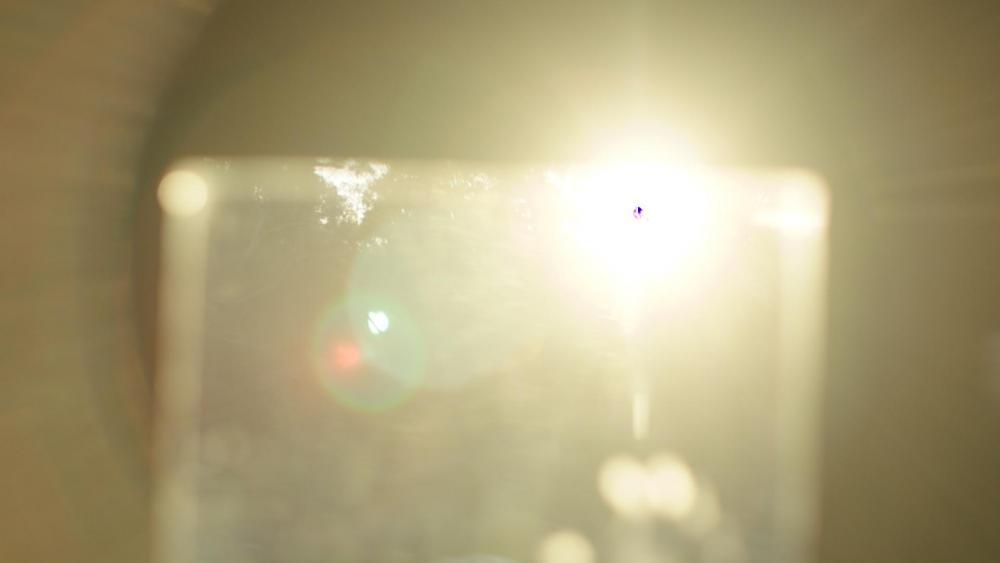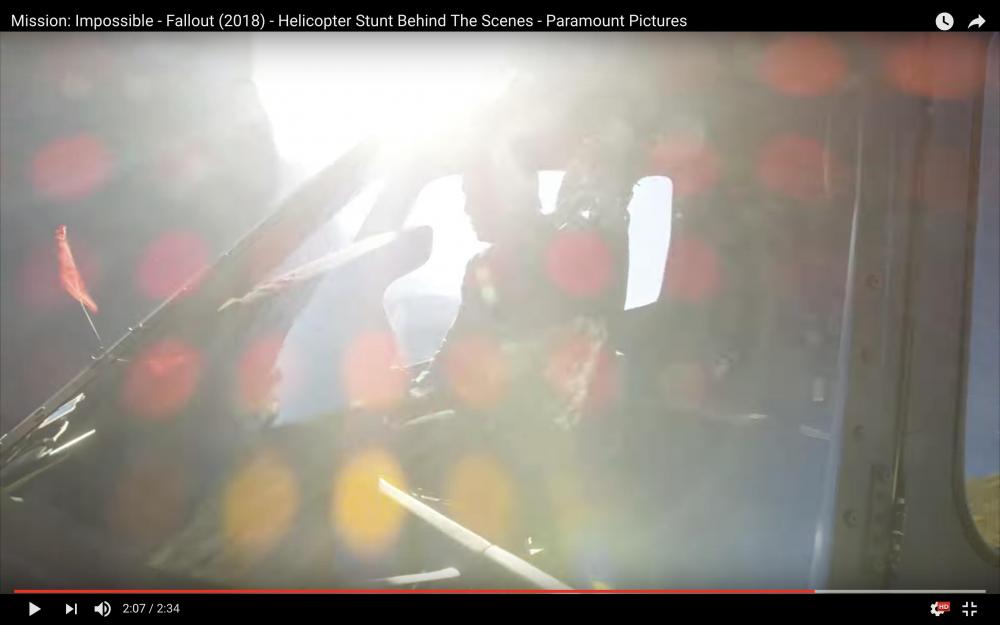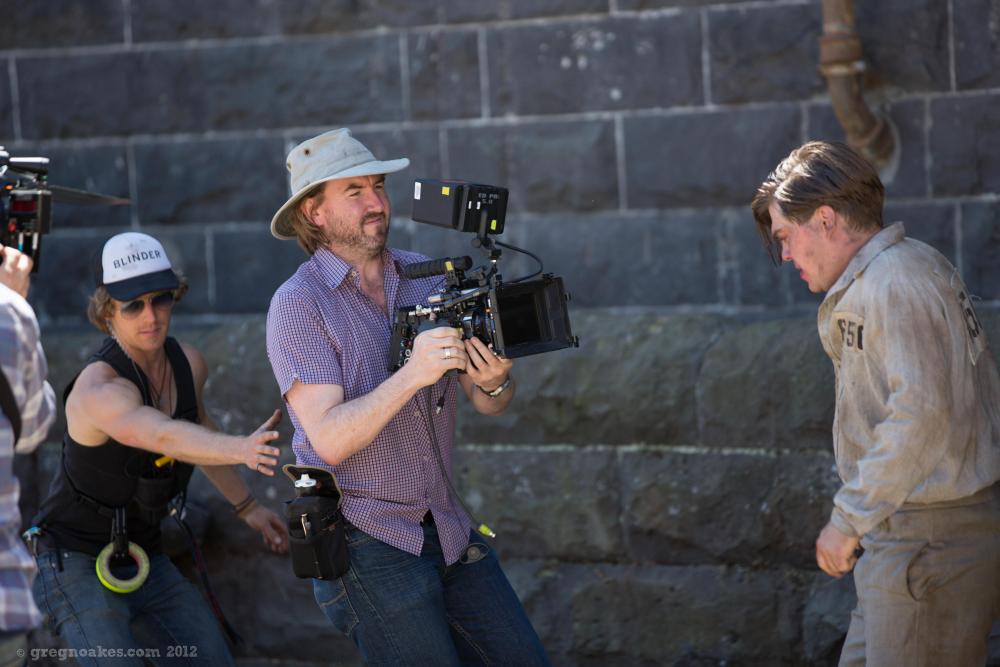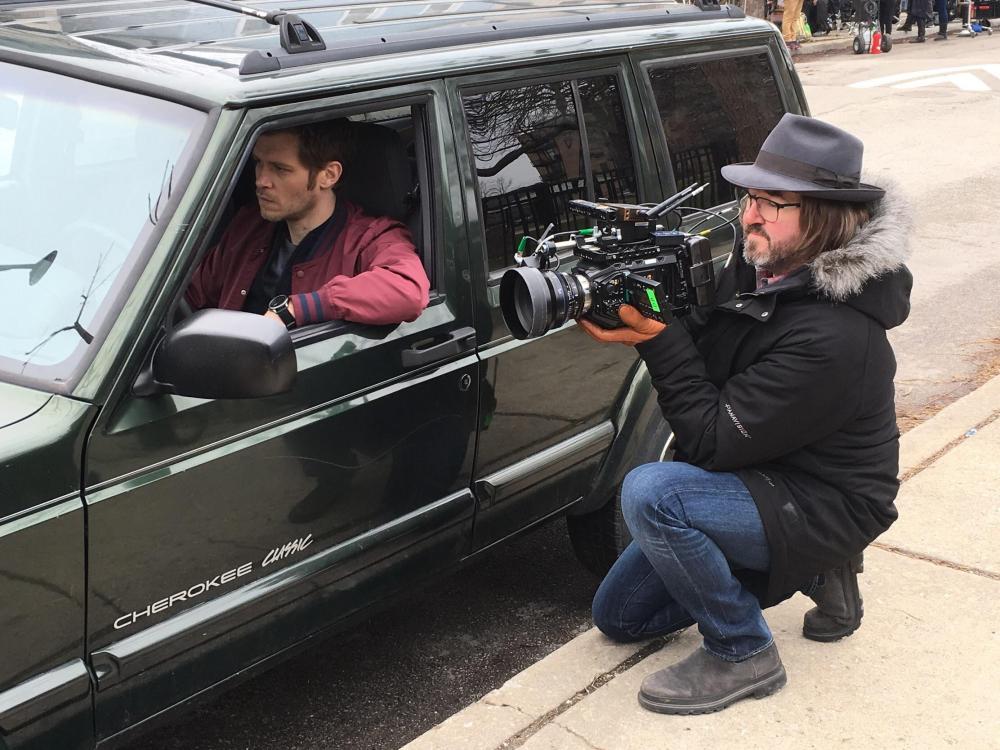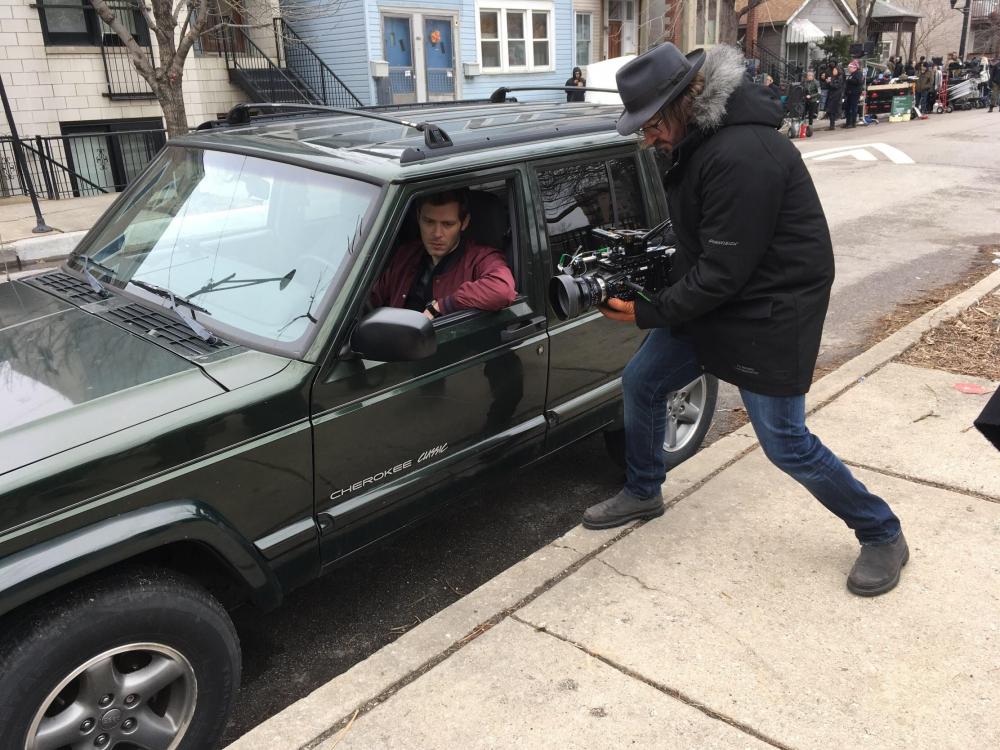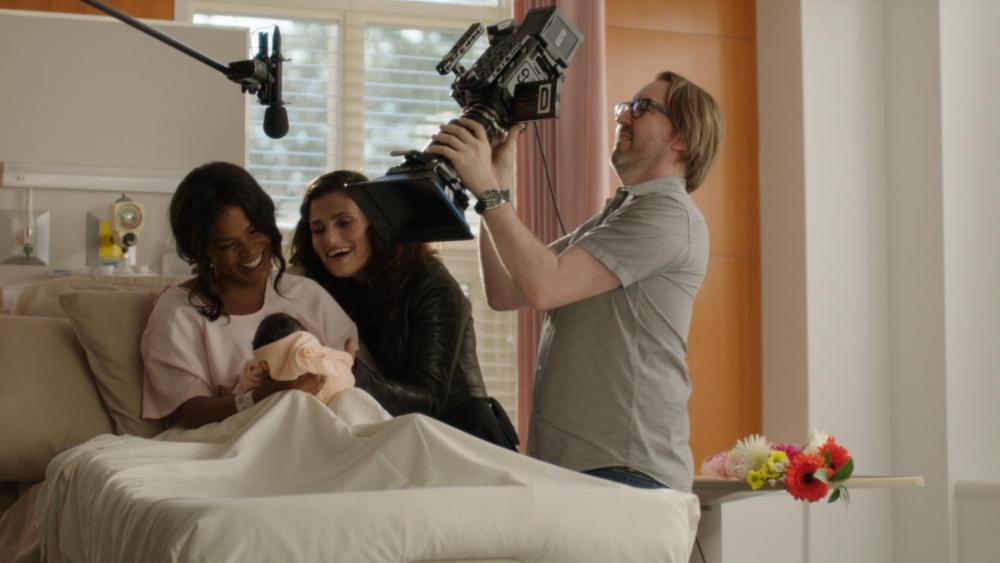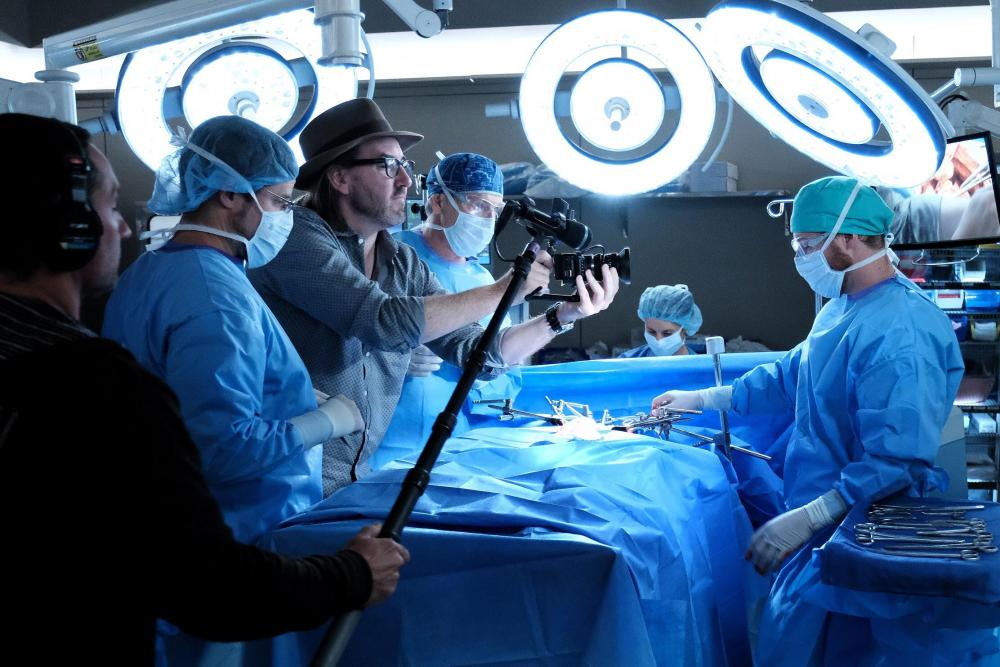-
Posts
233 -
Joined
Content Type
Profiles
Forums
Articles
Everything posted by John Brawley
-
Funny how the cost of a camera warps the expectation of the price of accessories. JB
-
I can’t comment about the testing process. But as alluded to here, testing and finding errors doens’t mean they will get fixed before shipping. No camera is perfect and THAT was my point. Today, I can make an Alexa show a black sun without too much difficulty and I can make a DXL or current top of the line RED have a strange OLPF flare in similar shooting circumstances. I’d classify these as major imaging problems in the way you were characterising issues to do with BMD, and I was only showing you that those cameras got knowingly shipped with similar issues that HAD to have been known about. Those that test and find faults aren’t the ones in charge of the building, fixing or shipping or repairing. It’s not their call on if something is a show stopper or not. There’s an assumption that faults were somehow missed, that there’s a problem with the voracity of the testing regime and yet, if you’re not allowed to talk about the testing process and what you find... No camera is perfect. The question becomes...Is it good enough...can you get away with it. That’s what every manufacturer has to ask themselves because they ALL have imaging faults. JB
-
Here's a Black Sun from an Alexa shoot of mine, and a nice OLPF flare from a DXL / RED Monstro on the latest Mission Impossible trailer. JB
-
The BMCC MFT is a passive or dumb mount MFT camera. I can't talk about the testing processes, and in this thread I think everyones sick of hearing from me now. I'm taking a break.
-
BMD always said in their marketing materials up front.... "Passive MFT Mount" That was the headline. "The new Passive Micro Four Thirds (MFT) gives you compatibility with a wide range of manually operated lenses, while also being easily adapted to other mounts such as PL mount via third party adapters." So it was clear what the mount was. And that it was "manually" operated lenses. And they got a lot of crap from people about doing it like that too. Go look at the BMD forum around the launch date. Kinifinity say "E mount" and it's really only click on the adaptor itself and then once you drill down you find that they define the caveat's...like it's a minor thing. "Attention: it does not support lenses which need protocol from camera, like SONY G series lenses, though the current E mounting adapter has electronic contacts. There would be trade-in plan with new adapters if new adapters support these electronic lenses in the future." Many people make the mistake of assuming E mount means E mount. Even here on this thread we've had arguments about if it does or doesn't do native E Mount. It doesn't . And it should be really obvious. They should be describing their $500 E mount adaptor (so cheap right ?) as Passive or Dumb E mount. Instead they say "E mount" with a hyperlink to a picture of an adaptor with electronic contacts and some fine print. http://www.kinefinity.com/shop/k2e/?lang=en JB
-
Sony are the OEM. They built it FOR Hasselblad. It's not licensed to Hasselblad so that Hasselblad can then go and make the camera under licence in their own factory. Sony made the camera with a Hasselblad badge on it. OEM. Not Licence. They are very different business arrangements. You have not made that case. It's not an E mount if you can't use an actual E mount lens. Isn't that obvious ? Isn't that relevant to the topic ? You're claiming E mount, you're claiming it's easy to get around and yet, you actually can't use an E mount lens on the Kinifinity despite the fact it has an E Mount option (unless it's some aftermarket E mount lens that doens't have comms) E mount lenses require electronic comms for iris and power for IS. If you don't supply that then no native E mount lens with work on Kinifinity's E-mount. The ONLY reason Kinifinity have been able to get away with saying it's an E mount is because it's not an E mount. It's only mechanically an E mount Give me some examples with costs please. By the way you know Clairmount went bust ? I guarentee you the cost of a squishy lens was many thousands to manufacture. (Clairmount were like Panavision, mostly rental only) You should edit this and say... "I think that one can attach an E-mount lens to a Kinefinity body -- you just can't change exposure or use the IS or record any metadata when using Native E mount lenses." As long as you're OK with not being able to change exposure, use IS or use metadata with E Mount lenses. How ? By making a "plate" that magically doesn't cost extra ? You're being foolish. Right. It's required. You agree. It costs 700 bucks. You want to add 700 bucks to the cost of a 1200 dollar camera for a feature few will use. I am not sure you understand the implications of native lens control or market economics mean to a camera design. Of course it does. Yes. Tokina made a lens that some copies couldn't hit infinity at the standard Canon FFD. Until they change over time or aren't right.Which is what happens when you make something user-changeable. Show me some detail about how you shim your EF mount ? You're saying you accept a mechanically induced optical problem. Not everyone's going to agree with you. And that's the point. You're saying you're happy to accept a lower level of precision with a lesser well built plate or adaptor. I think you're alone in thinking that everyone will be fine with the compromise that goes with that. Yep. At substantial cost. It can be done. I agree. You just don't want to pay for what it would take to do this. Can you elaborate ? Have you made lens mounts ? Lens adaptors ? Are you a manufacturer ? can you share some examples of your work ? But it's a 700 dollar item. Round and round we go. You keep saying it won't cost anything extra. It's 700 bucks ! If you buy a theoretical camera with two plates, that's 700 bucks a pop. Or at least and extra 700 bucks for the EF version and you can make some homebrew e mount adaptor for 100 bucks, but it's still added 700 bucks to everyone else's camera for a feature they'll never use. JB
-
Indeed. I guess I was trying to say, it’s not really what I agree with or want, but I can seperate my personal views about what is pragmatic and practical and understand why a company makes these kinds of choices. Because they also need to be viable as a business as well. What I want from a camera is not what most of the users of this forum want and is likely to result in a camera that would fail commercially. So who cares what I want ! I’m not against choice, but I’ve also had the SAME conversations with the people that can make this stuff happen. I’m just paraphrasing the answers to the questions I’ve already asked long ago from those that do the making. I have to say it’s really disheartening to see people shooting off about trying to work around and defeat IP. Even if you’re philosophically OK with trying to do that, you know that if Sony’s lawyers come knocking I’m pretty sure you’d feel different. Not to mention the fact that they are an important vendor for someone making a camera. The make a lot of components from the sensor down.... Would you REALLY want to jeapordise a new product that you’ve invested millions on R&D into only to have the company that potentially make your sensor yank it because you’re trying to circumvent their IP on a lens mount ? And then seeing engineering challenges claimed that are easy and cheap without any true understanding of what they’re claiming is possible. I’ve been a part of these conversations already. I’ve already asked most of the same questions that then get asked here. The same things get kicked around by R&D and product managers. They already have done the numbers on most of these things and I think BMD have shown more than anyone, if they can make something, they will, they have zero fear of market segmentation or protectionism of product class. But it does have to be profitable and enough people that will want it. JB
-
Part of the many behind the scenes testing I've done involves evaluating sensors. But once again. People say they WANT this sensor. Then they don't BUY cameras that have this sensor (Ikonoscope too remember) JB
-
Right. So price was a barrier. You weren't prepared to pay the price required for those features. Or you dibdn;t want them enough to pay the extra premium. Everyone wanted the kodak CCD that did glorious global shutter colour but no one wanted to PAY for it. Hence they went out of business. I'm sure if they COULD have done it cheaper, they would have done so to stay afloat. But they couldn't. So making a camera with a robust enough interchangeable mount system COSTS MORE. As evidence'd by RED's 700 dollar adaptor. Even the PL mount version of a lot of BMD's cameras COSTS MORE. Because that PL mount is hard to make cheaply to the tolerance required. I think Ursa was closer to 6K ? But not that big of a difference compared to the DB example. Again, no one wanted to pay the premium for what many thought was the BETTER made camera. Better ergonomics, better profile, much lighter weight. Everyone laughed at the giant iPad screen of the Ursa. And yet, though it failed, it was still more successful than the Cion. So here's a camera company that has a track record of making cheaper priced cameras. They know exactly the advantages of what's being asked. But they've made a COMMERCIAL decision about what features to bring to market. JB
-
It's not the easy path. They're not being lazy. But it has to be viable. Sustainable. Digital Bolex made a camera that EVERYONE loved. Everyone loved it's design ideals. The Kodak made CCD, the global shutter, the super 16 format. It was announced before Blackmagic announced their pocket cinema camera, which kind of did similar things. Super 16 sensor and fairly unique look. At about 1/3rd the price. There was a lot of love for the DB camera and it's visuals. But they went out of business. Even though in many ways they made a DEMONSTRABLY better camera in terms of IQ, it had less utility for most users who didn't want to put up with their RAW only model, the way the media had to be offloaded. So even though they made a better camera in many ways, gave us image purists what we asked for, they couldn't make it fly as a business model because WE DIDN"T SUPPORT IT. AJA made a camera that EVERYONE said was a better camera than Ursa. Cion was the camera that would show Blackmagic how it was done. It addressed all the complaints of Ursa, with supposed better ergonomics and a better build from a company that seemingly had a better reputation. It was stillborn. No one liked the pictures from it. Ursa wasn't a great success either, but considering it used the same sensor, it at least delivered a camera that for some made great pictures, had an EVF and could do everything on-board. Ursa was a failure too, but they sure as heck sold a lot more cameras than the AJA Cion. Ursa is very interesting to look at because it had not only an interchangeable mount, but an interchangeable sensor assembly. It TRIED to do what is being discussed here. Something modular, and interchangeable. Read between the lines here. I can't say a lot, but it's a LOT LOT harder to make something like this work than you think it is. I'm sure the engineering problems could be solved, but the COST of doing so at some point means it's not worth the energy expended, especially when sales of the camera overall weren't that great. JB
-
That SONY MADE camera was released in 2012. That's not licensing. That's OEM No one has ever made THEIR OWN camera with a native E mount. Like I said. Never going to happen. I have plenty of adaptors for PL mft and a lovely collection of lenses including Contax, Leica R, leica M and of course PL. That's how I know that in the end it's futzing. It's not really good for primetime. See above. See my many blog posts about using vintage lenses. I know the point you think I'm not getting. It's still painful TO DO. Have shorter focus throws, clicked iris, more problems with breathing and zoom tracking. All over it. But i never hear it being talked about as a camera except in this exact context. Not because of the pictures it makes, But because it has a native MFT mount with a larger than MFT sensor behind it. If this is the design ideal, as a proof of concept, it's hardly been stellar. I look at a camera like the Digital Bolex as a camera with similarly noble ideals that had a lot more directed visual impact. It's a fine idea. But why limit it to a native mount that's always smaller than the full sensor resolution that you have to use an adapted lens with. Play along with me and accept that Sony will never licence E mount. You want another lens mount is all. I'm not against what you're pitching, I just think it's dumb to do it with MFT or a mount you'll never see on camera not made by Sony. No. You disparaged manufactures for making cameras in a mount that's incredibly prevalent and means they can stay in business and instead advocate a native mount that would force any user to use another adaptor to get the full sensor resolution out of and realistically few people want. I don't think you get it. Kinifinity made an E mount. But they can't put an E mount lens on there. Because the lens protocol is what's protected. You can't talk to an E mount lens without that. Thus... No native E mount from Kinifinity. It's the only thing that can be done because it's DUMB to use MFT as an intermediary mount. What are you talking about "the cost" of the RED plate ? It sells for 700 bucks. Go check the price of the Titanium one. 99% of people that buy this camera aren't going to want to know about shimming anything. Most people don't even understand how to do it correctly. Gee like Blackmagic did with their first EF mount cameras that were the EXACT FFD for EF mount ? Ask all those Tokina owners how they feel about their lenses not hitting infinity. And that's EACTLY the kind of things that start happening when you start introducing mount adaptors or interchangeable mounts. You mean those ones you were just saying don't have to be expensive ? Which is it then ? Not for 99 bucks. Except with a camera that has a universal mount they're MORE LIKELY to have problems even if they don't use that feature. Right now EF mount's aren't generally shimmable (except for a couple of higher end C seriesd Canon cameras and a few RED's) There's no real mechanism to do it easily (user). You mean those 700 dollar ones you keep saying don't have to be expensive ? You want your cake don't you. You can't argue it's not problem when the ones you keep pointing to prove my point. To do anything as PRECISE as a lens mount needs to be it has to be done with great care and precision with the added complication of the electronic side of things. It's fine if you're used to still lenses that NEVER have accurate witness marks in the first place and usually overshoot infinity JUST BECAUSE the tolerances are far less. It's feasible, but it won't cost 99 bucks for an adaptor. Every mount will cost many hundreds if you want it done well and reliably. To argue otherwise says you're just an armchair engineer. I've had these conversations with people that do this kind of work. It's grossly insulting to say it can be done reliably for the cost of an 50 dollar ebay adaptor. On this forum. But not many others. I'm sure the market will reward them. I think youre confusing things. I hate EF leneses. I hate EF mount. But I can understand why a manufacturer would prefer to make a camera for a lens mount that has . amuch larger installed user base. Now I don't agree with that., But I can empathise with that thinking. It's so hard to make a camera and make money. Ask, Dalsa, Aaton, AJA, Digital Bolex, Ikonoscope, Panavison (two shelved cameras) Only if you accept the cost of that is 700 bucks my friend. I think you said it earlier. It's about degrees of precision. A bit out for you might be acceptable for for other sit most certainly won't be. No no no. You're keep claiming this and using RED as example. You can't have it both ways This getting tiring. Nope. RED is your example. They charge 700 bucks for their CHEAP version. The titanium version is 2000 dollars. More than the cost of the camera we're discussing here. Why do you think they even have those two options ? Why do you think they're charging that much if it can really be done so easily and cheaply like you claim ? JB
-
It's expensive to make a PL mount with electronic connections with precision. The fact that even the after market units are still hundreds of dollars says this. Making even a universal mount camera means adapters that would cost a similar amount. I bet your FZ mount adaptors have no electronics ? The RED one costs a similar amount too http://www.red.com/store/products/dsmc-canon-lens-mount I've never said that it's wrong to adapt lenses. It's not always what I'd do, but it's great to be able to do it. I think you're not understanding what my issues is here. It's not wrong of you to use a Nikon D series DSLR at all, but would you feel the same if the only NATIVE mount lenses the Nikon D850 could accept were DX (not FX) lenses? Everything else had to be adapted. Would you feel the same if your Pentax 645D could only accept NATIVE K mount lenses ? Would you feel the same if the only NATIVE mount lenses the 5D MK3 could accept were EF-S lenses ? That's what you're asking for when you ask for a much larger than MFT sensor in a MFT native mount body. If you think any of the above scenarios are perfectly acceptable for a camera manufacturer to build then I'll let this one go. At the moment JVC seem to be the only one to have done this ever. You can do that already with MFT. It's the reason I love MFT. I'm not against that at all. JB
-
Or you could say it like this... ...you can go native (but most likely not ever be able to use the full advertised sensor resolution with the majority of native MFT lenses), or (be forced) to use simple adapters or focal reducers if you actually do want the full sensor resolution. It’s not about more choice if you HAVE to use something that isn’t the native lens mount of the camera to use the full sensor resolution. Some MFT lenses may cover but most will not. Thats what’s silly about this. You want MFT or E mount just so you can use other legacy mount lenses. Im against a camera with a native lens mount that doesn’t have a sensor optimised for the lens mount it’s working with. You’re commiting to being windowed in its native mount. If you were to design an OLPF for example, which format would you optimise it for ? 135 format lenses or the lens mount that’s fitted to it ? What you really want is a new universal mount with a short FFD that allows lens power, control and metadata where appropriate. JB
-
What killed film wasn’t digital per se, it was the migration of film PRINTS in exhibition to digital projection. Of course digital projection at first has obvious advantages. Dust, scratches, stability and of course, they won’t change the 4th reel for one printed on a different release stock from a different lab. However, like film, most cinemas let their plant run down. With digital this sucks. I see many many cinemas with poor digital projection. Tired and shitty 2k projectors, dull whites, no contrast, soft setups, milky milky blacks make me crazy. Look at black masking / surround drapes next time you’re in a cinema and compare it to “black” from a projector in the image. Digital projected black is more like 18% grey. There’s no contrast in the image like with a film print, no dynamic range. Some new systems are fixing this (dolby and the new giant OLED cinema screens being trialled in CA) ...and for the love of god, showing a 2D on a 3D screen is a major crime that few notice. I complain and usually get blank stares. They don’t even know what aim talking about. When you see an “answer print” on a properly setup screen it’s something to behold. Truly breathtaking. I’d forgotten how magical it really really is. We even have the technology to make prints at first generation (answer print) pretty much in real time instead of the two stage duplications of release print but it’s too late. Doesn’t matter now. Most of Kodak’s business was in making print stock, not camera negative. That’s what killed them. Well actually, the motion picture imaging division has always been profitable. Just not profitable enough to continue to prop up their moronic decision to make consumer printers (but not supply the ink). JB
-
If Blackmagic made a native MFT version of the 4.6K camera you realise that you could NEVER shoot at published maximum resolution of 4.6K unless you DON'T use an MFT mount lens ? The other examples you make all go the other way. You're windowing down for video from a stills camera. This is a cinema camera that can never shoot the full 4.6K sensor UNLESS you DON'T use a native lens. That means you HAVE to adapt it to get the full sensor. Which is what the JVC did as well. The very fact it's so often brought up AND YET never seemingly used on anything of note is the point I make. You bring up a great point with yet another closed proprietary Sony only mount... the FZ mount. Let's look at the price of of some FZ adaptors that keep the electronic connections so we can use lens metadata, or power IS and iris control. (FZ by the way is Son'y cinema version of E mount) Here's the one that Sony make to go to PL. I presume this is the most robust mechanically and reliable. https://www.bhphotovideo.com/c/product/1053116-REG/sony_lafzpl12p_pl_to_sony_fz_mount.html And some other after market ones...EF mount https://www.bhphotovideo.com/c/product/1173012-REG/optitek_cpli_fz3_prolock_i_electronic_lens.html?ap=y&gclid=CjwKCAjw4PHZBRA-EiwAAas4Zo9CR_3OYgnWusLKLjNus5ImW7Nvf11fa1DTtfhWUCpiEhCiMKQKeRoCK7wQAvD_BwE&smp=y https://www.adorama.com/kaelafzeos.html What we want is to adapt any lens to a camera. What we need is a mount that allows this with a short enough FFD and that's mechanically stable enough to be used reliably for anyone that can afford a $1200 camera. Sony E / FZ and MFT are just a way to get to that want because we can do it through adaptors. The fundamental problem is that it's EXPENSIVE to make this kind of functionality in what is a consumer priced product that 99% of those consumers don't want or need or even know about and might also potentially screw their camera up if it wasn't done well enough and failed at doing it's core job. JB
-
I'm very sure. Sony have yet to do it even once. A physical E mount isn't the same as a native mount. Hasselblad OEM'd a Sony NEX 7, added some wooden handles to it and some designer styling and sold them for five times the price. They literally re-skinned a Sony camera, put a Hassy badge on it to take advantage of dentists who buy limited edition's of cameras like this because they think they will appreciate in value. That's NOT Hasselblad doing a native E mount camera The lunar was a Sony camera that Hasselblad put their name on and jacked up the price. Part of the failed strategy that nearly sent them under before DJI bought Hasselblad. Not at all. You can use them on the camera used in the title of this thread just fine. I've got a nice M-->MFT mount adaptor that works great with my M mount leicas but the lens to lens inconsistency puts me off, almost as much as the poor MFD and short focus throw. No because in re-housing them, generally makes them more useable. Leaving them in their original state means they're incredibly painful to work with. It's just not very practical is it... My point is that it's not been embraced by anyone. No one wants this great idea. It's not even doing anything clever really. If it picks up a native MFT mount lenses it auto windows the sensor size ? You can never use the full sensor size with lenses made for it's native mount. That seems pretty backwards to me. I guess the (lack of) LS300 success is my counterpoint to you disparaging short sighted manufacturers. If there really was a genuine WANT from this we'd see more camera manufacturers doing it. I agree that one COULD make a universal mount that does what E mount doesn't without being E mount but I disagree that it's going to be inexpensive. I've actually been down this path before. Interchangeable mounts and mount adaptors ultimately are a gamble. It's incredibly difficult to make something that precise that is field switchable that is consistent enough over time to always maintain the right FFD and electrical connections for those lenses that do meta data, IS and need Iris control. If it really really was that simple someone would have done it. The closet we've seen is Kinifinity. But the "bolting on" part is what's difficult. See above comment. I speak from experience. There is a BMD camera that ships right now that has interchangeable mounts. Once upon a time there was some thought given to these goals. But it's turns out it's a lot harder to do than you writing "inexpensive" and "bolt on" is. And in the end, as per the LS300, not that many people want it. Hats off to them. Innovation should be rewarded. If it's what people want. It's a lot more expensive and complicated to make and produce a camera than it is to produce a song. But no one buys them. Adaptors introduce a point of failure in maintaining the flatness of the field and FFD. Easy to say. Harder to do. I'm an advocate of m4/3. Unlike the closed Sony ecosystem it's a genuinely open consortium that any manufacturer can join. Aside from E mount lenses, I can't think of any adapted lens that you can adapt to Sony that you can't also adapt to m4/3. But it's insane to make a camera that has a larger image circle than the native lens mount it has JUST so you can adapt it to other lenses. JB
-
A setup is anytime the script supervisor changes the ID on the slate ? That's a lens change or a substantial change in storytelling shot construction. On take 1 of a setup, if there's something blocking and screwing up the shot and you have to move the A camera six feet to get around it, then the shot is considered the same shot, you go to take 2 and its the same setup because the intention is the same. Kind of the same if the lens change is from a 27mm to a 24mm because you're not quite fitting everything in. Sometimes though on take 3, the B camera has gotten what they need and you give them a different shot to do so that would generate a new setup and a new ID on the slate. (don't get me started on the differences between US and AU slate ID's. The lighting is always being tweaked to each CAMERA (not shot) so that's constantly updating in small ways. I tend to have some go-to ways to light for cross shooting and it's established often on the first setup and then tweaked to each subsequent setup. Kubrick seems to have the reputation of most number of takes. "For The Shining I spent two weeks on the set in Elstree. My scene with Jack Nicholson lasted about eight minutes. We shot it 50 or 60 times, I should think - always in one take. Then Jack Nicholson, Stanley and I would sit down and look at each take on a video. Jack would say, 'That was pretty good, wasn't it, Stanley?' And Stanley would say, 'Yes it was. Now let's do it again'." I always wanted to be in the camera department. My first job was working for a camera rental house but the owner was a working DP. He shot a lot of documentary work and TV promos. I was his full time assistant for nearly 5 years. It was really like going to DP school for 5 years. But being his assistant meant you had to record sound. So I learnt to record sound ? He was by far the biggest single influence on my working style He taught me the importance of a bedside manner on set, he taught me to pull my own focus when shooting (when necessary) he taught me how to test, how to be hungry, to learn. He was a technology innovator and a true pioneer. One of the first to embrace HDTV in Australia. One of the first to buy RED cameras and advocate them. I wrote about his passing here. https://johnbrawley.wordpress.com/2011/04/17/the-passing-of-john-bowring-acs/ It's never too late to change ? I'm not sure what you mean when you ask "finish an episode". It NEVER goes longer than the number of days. It's scheduled within an inch of it's life and if the schedule isn't make-able then it's re-written ? TV drama and Docos are where I've trained in. The pace is not new. What's gotten better is the production standards generally. We've gone from using 2/3" video cameras to S35 sized sensors and cinema style framing and editorial style. Streaming services and VOD has lead to a new era of "elevated" TV drama. It's shot like a movie, it's got MOVIE actors and directors working on it and it's visually told in "movie" style choices. Except we have to still shoot it as fast. Yeah I know time is always the enemy. Typically a movie, even a low budget one, aims for 2-3 mins of screen time a day. TV drama is typically 6-8 mins on location and 7-12 mins in a studio. I like shooting with more cameras (three full time) because it gets me more shots from the same number of setups. More shots = more coverage. Simple maths. Some shows are different. A show like stranger things shoots an episode every 14 days. They shoot it "one camera" style and this takes longer. I know some crew on that and they tell me that they never make their days and that the directors on that can pretty much do whatever they want and Netflix don't care much about the show's budget. But that kind of "auteur" perspective in a TV show is pretty rare and unusual and is only permitted because of the show's great success. Arguably this could be why it's successful too. Most directors would be fired or never re-hired again if they didn't deliver an ep in their allowed days. When I look up directors I'm about to work with, I look at how many episodes they've done on a show. If they've only done one and never gone back, it's a pretty good sign they're going to be....difficult. I know a great director who started doing TV drama. He loved big architectural wide shots. We shot a few scenes without ANY close coverage. I begged him to shoot close up passes "just in case" and he was adamant. Nope. If we shoot those shots they'll use them ! He got reamed in the edit when the producers screening happened. They asked for closeups on his edit and he said he didd't have any. He's never been employed again by one of Australia's most prolific producers. If any other producers call him to ask for a reference guess what he's going to tell them. TV truly is a "producers" medium and these days, most of the producers are really writers. JB
-
Careful. They’re very different cameras. A micro is very very small with a native MFT lens. Fits within the palm of my hand. Thats very different to a box that has to have a monitor fitted (ursa doesn’t) and isn’t there still a few frames lag on the monitor output ? Were getting into highly subjective personal taste things here. The bigger issue really is that it hasn’t really impressed on the very nice pictures front. Not for me anyway. JB
-
Only pretty recently I think. JB
-
Don't weep. I'm very kind to sound. I used to be on the other side of that fence. I had Zaxcom Deva serial number 4 which was lighter than the PD2 I started with. I went to the Zaxcom factory a few times and knew Glenn quite well. Back in the day I used to hang with the likes of Glen Trew and John Coffee at trade shows and I cursed the day MS stereo was invented for all the BBC shows I worked on. https://groups.google.com/forum/#!msg/rec.arts.movies.production.sound/_pL641Crbhg/mJPF4mlnDNkJ So I get it. I used to be that guy that no one talks too. (sound joke) I don't shoot wide and tight. I tend to shoot a lot of coverage first. I almost always cross shoot. So matching frames and frame sizes. Common head room mostly. Three cameras, but the same head room means there's a pretty good chance to get in. I don't light them out of the set either. AND, once i've been working with them for a while, they know that when I do a football pass, it's ONE camera, and it's in super close and they can get juicy good sound when I do that which usually covers any holes. And sound always can look at me and say it can't be done and I'm fine with that. In the US they seem to be all about lavs anyway, there's always 12 of them going. But there's always at least one boom, sometimes two when there's a big spread. It's mixer, utility and boom. But utility is pretty busy with the lavs, and second booms about 50% of the time. The 11-1 is the legendary Panavision 24-275. 275 divided by 24 equals 11.45 so we just call it the 11-1 (for it's ratio). The Angenieux 24-290 is a 12-1. The zoom ratio is a common cinema naming convention. I own the Veydras and some voightlanders too (and pretty much any m4/3 lens you care to name) but I keep coming back to the SLR Magic's because they're "interesting". On the micro I use the 10mm T 2.1 Not many other lenses in m4/3 match those numbers and have cinema style gears and clickless aperture. And they're a great looking lens. I would test a kinefinity if I could get my hands on one. Seems like that's impossible to do. I'm not interested in buying a camera to try it out. I don't really want to own cameras. I can usually test a camera by asking for one to try out. I haven't done so with Kinifinity, but I'm pretty sure i wouldn't get a response. I haven't been driven to really look because, frankly, I've not really seen anything that's compelling out of them in terms of footage. Maybe that will change. So far the DR looks pretty limited from what I've seen, the codecs have been a bit of a mess and they've never quite seemed to actually ship what they announce before they're announcing the next thing. I had a good play with them at Cinegear, but I don't see much advantage. I'm very happy with PL mount and native MFT for smaller sensor cameras. Unless the camera can do something I can't do with what I'm currently using there not much hunger for me to look. I'm sure this is heretical, but I also hate the "sensor in a box" model that RED champion and that is aped by Kinifinity. Modular is crap when you're trying to balance something on your shoulder. Give me a camera designed to be operated, fondled and used by human hands, not a modular lego / mechano set with adaptors, brackets, machismo styling and nato rail. JB
-
This is known as “the pattern” Resident eps are are shot in 8 working days plus one day of second unit. The second unit happens concurrently with the first day of the second episode shoot. 6 days are shot in studio and 2 day are out on location. We average about 35 setups or “slates” per day. Have done as high as 60 on Resident. Many setups are three cameras. So that’s about 70-90 “shots” per day. Each camera shoots about 60-90 mins of footage per day but it’s not unusual to have 2 hours per camera (for action or slow motion heavy days) i day we have three cameras but I really mean we have theee camera operators. We have many more cameras that are pre-build for different roles. A, B and C are Alexa Mini. D camera is a full time Steadicam camera (Alexa XT for weight and mass). It goes on down to letter q or something silly. There are three sets of Primo Primes and each camera has its own 11-1 as well. We also have a couple of other specialty lenses like a CP 50 macro, and I also use a lot of SLR Magic primes on the micro and APO Hyper primes on the Ursa Mini. We shoot about 6-10 script pages per day. I always say you can’t really go much faster than a setup every 15 mins. That’s 4 per hour. On a 12 hour workday it means we theoretically can do 48 setups. It’s very hard to maintain that kind of pace in a day (and have it look good) Sometimes you can get the shot turnover down by leapfrogging cameras. Have the A cameras do the first shot, prep the B camera to come right in after that setup is finished and the A camera pulls out. There are 12 in the camera department not including me. Ops, firsts and seconds x 3 plus two utilities and a loader. Time is the thing we all struggle most with. Time to light, time to shoot, time to tweak. The pace of TV has a way of “honing” your choices and teaching you to react and trust your instincts. JB
-
Mostly it’s about the codec and matching to another camera. Main camera is generally 12bit ProRes. To have secondary cameras that also shoot ProRes saves a lot of grief from post, and it’s very easy to make them almost indistinguishable from an Alexa. That’s harder with the other cameras you’ve listed. Especially with how much footage we shoot in long form TV drama. JB
-
It's never going to happen. Sony won't allow it. They will never allow it. Kinefinity can say "future adaptors" all they like. Sony run a closed eco-system. This is their MO. Sony own the mount. No other camera other than one made by Sony will have a native E mount. Did you know that this year they went past 130 million lenses made ? 130 million EF mount lenses have been made ! Think of it like this....that's 130 million potential customers. Canon make the worlds most popular and numerously made lens mount. I personally hate them. They should NEVER be on a cinema camera and they suck the WORST for any kind of motion work. EF is an idiotic lens mount for motion work and shouldn't ever be used in my view. But there's a zillion of them out there and for the vast majority of those that are moving into a cinema camera eco system from a DSLR setup, chances are it's EF mount lenses they have. So they make a camera that uses that mount. Once you get serious about cinema glass, then you go to PL. Adapted 135 format glass...is amateurish. I hate to sound like a snob but it's really really hard to make them fly on real jobs. In the end it's often very difficult to make it work on set. Yeah I know you CAN do it, yeah go post your vanity projects and your music clip that looks great but i'm saying generally, it's a pain in the arse and no one aside from hobby-ist and indie shooters can be bothered futzing around with these jigs. Look at how successful that JVC was. Name a show shot with them. Show me someone who did some amazing creative work on that camera because it existed and did something no other camera could do. They're like anamorphic adaptors. Almost no-one uses them on paid shoots. They're just too punk and couture for anyone to put up with. You go get real anamorphic lenses. (and hey I've done it, I used a LA7200 on an Si2K and zeiss supers before anyone knew what an Si2K even was) I'm a lover of obscure lenses, but the obsession with adapting and speed boosting lenses... I say this with love of anything that isn't conventional, but to disparage camera manufactures for making a mount that services BY FAR the vast majority of the existing stills DSLR market for doing just that but holding up very marginal cameras like the JVC and Kinefinity as a beacon of success doesn't fly for me. Because the market has already spoken. We lens nerdists here on mostly THIS forum re the market. It's tiny. Making a camera that has a sensor that is LARGER than it's native lens mount (MFT) which FORCES you to always use and adaptor or advocating a mount that is proprietary (E mount) is commercial suicide. It forces the user to have an adaptor. Imagine all the idiots who go buy an MFT native lenses and post about the lens not covering their sensor. I'm a fan of MFT. But I'm a fan of NATIVE MFT lenses on an MFT sized sensor. JB
-
I used to use RED a bit as you can strip them down to almost nothing. There are better cameras though these days.
-
Thanks for the notes. A great deal of The Resident is shot handheld with an Ursa Mini Pro and APO Hyperprimes from SLR Magic. We rig it in what I call “football” mode. Body, wooden camera cheese plates, Dbox, MDR, battery, lens and side handle. I try to keep it as small as possible. Attcahed are a couple of shots I was operating on a pilot in Chicago a few months ago. A lot is also shot with a minimally rigged micro camera, WC cage, self pulling with a 10mm SLR Magic lens and a 5” VA for monitoriing on an arm. Idea being to keep it all very small. There’s a picture here showing the way I work that rig here mid-take. It allows me to get the camera inside the surgical feild and very intimate. We work really hard on making the medical stuff as real as possible. It’s a real prop in that case. Most of the extras in surgery scenes are realy life OR nurses and surgeons. We have surgeons as consultants and we make a lot of prosthetics to be story specific. We have to take some liberties though, usually for time. I mean it’s a 47 min TV show I recall with the scene you’re talking about that graft would normally take about an hour to install and sew. Mina gets it done in a few seocnds ?. The whole procedure would take a few hours. So we try to get the spirit right and we try to be very explicit and accurate with the medical depictions. We still get. alot of medical people flaming the show for not being “right” but usually they’re more upset with the way we depict the shortcomings and failings of the US medical system ? We shoot, edit and master in 1920. Fox does the downconvert. You can get 1920 versions from other stremaing services though. JB




